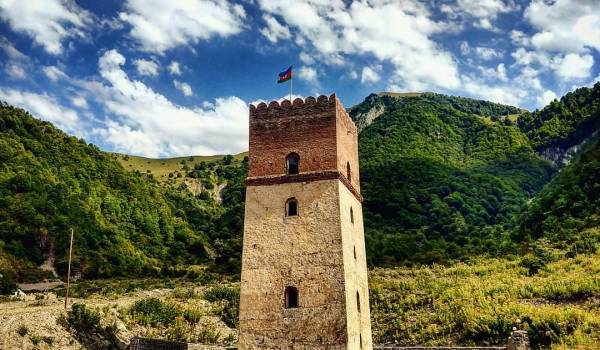
History of Gakh
The name of Baku, which has an ancient history, is found in works written before BC. These documents contain notes about oil extraction from hand-dug wells and saffron cultivation. Greek, Arab, Persian and European travelers and scientists have written in their works about the carriage of oil from Baku on camel caravans.
Baku, called the edge of "black gold", has historically been known as an oil city. The city has established trade relations with eastern, southern, and northern neighbors for centuries. This connection was made via caravan routes and by the sea.
Undoubtedly, Baku is one of the oldest and largest cities in the East due to its antiquity, size, and population. The city was still known as a major center of oil production and processing in the Middle Ages.
Baku, the largest port city of the Caspian Sea and the capital of The Republic of Azerbaijan, was the capital of the Baku Khanate in the 17th century, the administrative center of the Baku province in the 19th century, and the capital of the Azerbaijan Democratic Republic and the Azerbaijan SSR in the early 20th century. A Sassanid-era treasure from the 5th to 7th centuries found in the city indicates that there was a settlement in Baku.
The first record of Baku was found in the "Book of the Dead" during the reign of Pharaoh Menesa, the first Egyptian pharaoh, 3,500 BC.
The location on the ancient "Silk Road" and climatic conditions made Baku become a settlement since ancient times. Stone inscriptions and archeological finds in Absheron and Gobustan, which have a 12,000 years old history, prove that Baku is an ancient city. According to historical sources, Baku is more than 5.5 thousand years old now.
In the Middle Ages, it was one of the main cities of the Shirvanshah state, the Safavid state, the Ottoman Empire, and the Baku Khanate. In 1847 the world's first mechanically oil well was drilled in the Bibi-Heybet area. In those years, new houses and streets were built around Baku in the regard to the commissioning of new oil fields. In the 19th century, Baku quickly became a big city of millionaires.
The industrial development of oil fields led to the rapid growth of Baku, and the city became an example of a rapidly growing European city. Baku began to attract the foreign capital, and offices of Rothschild, the Nobel brothers, and other famous businessmen were opened.
On May 8, 1883, the railway between Baku and Tbilisi was completed and put into operation. The city has become a destination for many migrants. With the oil boom, the city's cultural life flourished. Baku became known as the "Paris of the Caucasus".
In 1918-1920, Baku was the capital of the Azerbaijan Democratic Republic, the first democratic state in the whole East. On April 28, 1920, the Bolsheviks occupied Baku. During the Soviet era, Baku was the capital of the Azerbaijan Soviet Socialist Republic. During World War II, the city became a major strategic center for the supply of fuel to military aircraft and armored vehicles of the USSR.
On the night of January 19-20, 1990, the military forces of the USSR Ministry of Defense entered Baku on the pretext of preventing anti-Soviet riots. The occupation resulted in a bloody massacre for the local population, including women, children, and the elderly, who tried to stop these forces.
Today, after overcoming the severe economic and social crisis of the late post-Soviet period, Baku is experiencing a period of revival as the largest economic and cultural center of the South Caucasus.
In May 2012, Baku hosted the 57th Eurovision Song Contest. In June 2015, the first European Games were held in Baku. Since 2016, Baku has become one of the few cities in the world to host Formula 1 races.
Located in the south of the Absheron Peninsula, on the shores of the Caspian Sea, the city has an area of 2,200 square kilometers and a population of about 2.2 million. At present, about 500,000 refugees, who were expelled from the ancestral lands as a result of the Armenian occupation, live in Baku. Baku includes 12 administrative districts and 5 urban types.